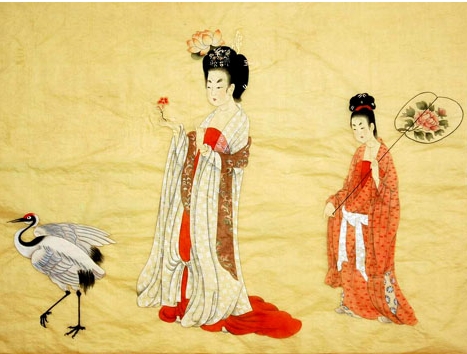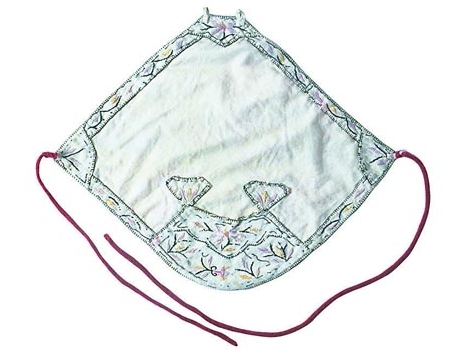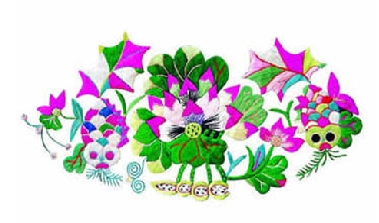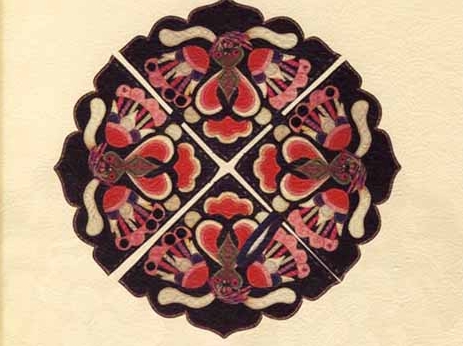
Underwear had a discrete niche within ancient Chinese costumery. The ingeniously demure styles, bold colors and ornamentation of delicately crafted undergarments reflected the refined approach of ancient Chinese women towards life, beauty and love, as well as their creativity.
Underwear, unlike outer garments, which were strictly prescribed according to ritual and rank, offered women the chance to dress according to their mood. All women, regardless of social standing, hence perceived underwear as a medium of self-expression.

Ingenious Designs
Subtle designs of underwear gave altered impressions of the wearer's figure, according to her whim. The detailed ornamentation on ancient lingerie also reflected individuality as well as the trends, customs and beliefs of the time, thus imbuing undergarments with historical essence. The two main styles and structures of underwear were those of a front-piece and a front-and-back tunic. Both came in rectangular square diamond and triangular shapes, or simply fit the body in question.

Color Consciousness

Women sometimes chose bright colors that combined in striking contrast, for example, red and green or yellow and blue with black, gold or silver selvedges that emboldened the overall visual effect. Others preferred more understated shades in similar hues that gradually lightened or darkened to produce a harmonious effect.
Patterns and Ornaments

Women of old China wore underwear decorated in the artistic motifs of their time, such as landscapes, flowers, birds, clouds, myths, legends and literary characters. In addition to being decorative the designs signified specific states and were also symbolic. A magpie and plum blossoms, for example represented happiness, as it was an image reminiscent of the Chinese idiom defining a person radiant with joy. Auspicious symbolism included bats, representing good fortune, and lotus with fish, which invited wealth.
Consummate Craft
The decorative features on ancient undergarments demanded high embroidery, stitching, pasting, patching, embellishing and rolling expertise. Stitches had to be of an even tension and the slightest crease or tear in the material was out of the question.
The only underwear deemed fit to be worn was smooth, fine, light, soft and leveled off. Added features included flower designs on laced sections of the fabric in various styles of embroidery and pasted on feathers or fur for greater effect.

Underwear was considered a showcase for the wearer's taste and needlework – attributes highly valued in women of ancient China.
Varieties of Chinese Women's Underwear
1. Moxiong, a one-piece underwear garment binding breasts which first appeared in the Northern Dynasties (420AD-589AD) and was popular during the Tang (618AD-907AD) and Song Dynasties (960AD-1279AD).
2. The zhuyao ("zhu" meaning button) was a style of embroidered underwear favored by Qing Dynasty (1644AD-1911AD) court ladies.
3.The xieyi was a tunic-style undergarment first worn in the Han Dynasty (206 BC-220 AD). Xie in Chinese means frivolity. The term xieyi hence implies the prevailingly evasive attitude towards even the mention of underwear.
4. The dudou, also called the doudu, was either a square or diamond shaped apron-style garment, often embroidered, covering the bust and belly which fastened at the back. The dudou often incorporated a pocket in which to keep ginger, musk or other Chinese medicinal herbs believed to keep the belly warm.





